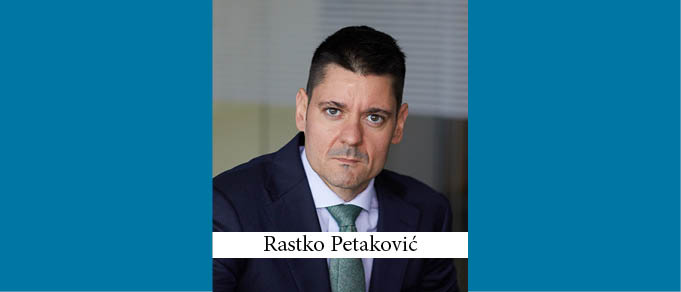Until a few years ago, the narrative within legal practices, as in most service industries, focused mainly on austerity, small growth numbers, and the crises. Most legal practitioners feared an uncertain future and all the risks it held, including evolving client expectations, financial pressure, and the long-term impact of the global economic crisis.
Speaking from today’s perspective, those fears seem to have been unjustified. The most recent global economic indicators and data speak in favor of optimism, as the largest global economies are performing well in terms of GDP growth and declining unemployment. Deal reports show that the opening quarter of 2018 – increasing by 18% over Q1 2017 to reach USD 890.6 billion – is the best performing in decades.
The relevant data supports the same optimistic narrative in the CEE region. Economic indicators are definitely improving across the region, even in those countries which were hardest hit by the global economic crisis. The negative effects of austerity have definitely subsided and regional practices seem to be growing. Deal reports show that we are witnessing record-breaking numbers in terms of deal count and value in the first quarter of 2018 (for example, Mergermarket reports EUR 12.1 billion deal value in Q1 2018 in its CEE and Russia report, the best performing opening quarter since 2013).
All of this translates well throughout legal practices: global firms are achieving record profits and revenues, while confidently expecting even more growth, as evidenced by frequent lateral hires of star partners on both sides of the Atlantic. The exchange has become so obvious that The Financial Times felt it newsworthy, reporting in a recent article that even the most conservative firms in London are abandoning the lockstep financial model to retain their star partners or bring in new ones. In 2016 and 2017, most firms increased associate salaries for the first time in over a decade. Contrast that with the massive trends in outsourcing from 2008 and the picture becomes clear: behavior in response to market upsets is predominantly reactive, and we should be happy that the crisis is behind us.
As lawyers and business people, we get entangled in thinking mostly about short-term trends. Most of these above-mentioned indicators have performed well in the past too, and most of the records that are broken today date back to 2006 or 2007. Do not take this the wrong way – I am not making a case that another crisis lies ahead, since much of this optimism is translating into investing in legal practices and improving the way we serve our clients and communities. Clients are re-recognizing the value of high quality service (contrary to the expectations of price pressure and the commoditization of service). Legal talent is again embracing the culture of legal practices (contrary to the fears of millennial invaders hacking the law firm concept and the overall professional services culture)
However, a case should be made for thinking even further ahead to what our clients will expect next and what we should do as lawyers and leaders in our fields. The time for long-term thinking is now. We are enjoying the benefits of all the positive economic trends, but the memories of the past crisis remain fresh. Client expectations are increasing through both boom and bust cycles. Finally, young lawyers are smarter than ever, and the gap between star partners and juniors is closing. The sooner all of these challenges are met with robust planning, the more relevant our profession will remain in the years to come.
The first step towards long-term planning is embracing several aspects of the business culture of the new generation (and I am intentionally avoiding references to the “start-up mentality,” with all the bad credit it gets). In terms of structure, it means developing strategies focused around people and introducing forms of profit sharing to ensure that lawyers are faced with how clients value their work from early on. It also means abandoning strict hierarchy structures in favor of more direct pathways from junior to the most senior positions (for both lawyers and non-lawyers), and introducing far more flexibility and openness for female partners. In terms of processes, it means the introduction of more algorithmic thinking, focusing on iterative processes while serving clients (for example, allowing clients access to early drafts of our work in order to both ensure that their explicit (not assumed) expectations are met and increase efficiency).
If the question is what to do now, my answer is simple. Spend a day at an IT incubator or at a start-up conference. Become a member of digital initiative (just like Karanovic & Nikolic became part of the Digital Serbia Initiative) and use your legal expertise in service of digital transformation. Offer help to a start-up or scale-up without expecting anything in return. Allow your lawyers (and other employees) exposure to the new culture and provide them with pathways to management.
By Rastko Petakovic, Senior Partner, Karanovic & Nikolic
This Article was originally published in Issue 5.5 of the CEE Legal Matters Magazine. If you would like to receive a hard copy of the magazine, you can subscribe here.
